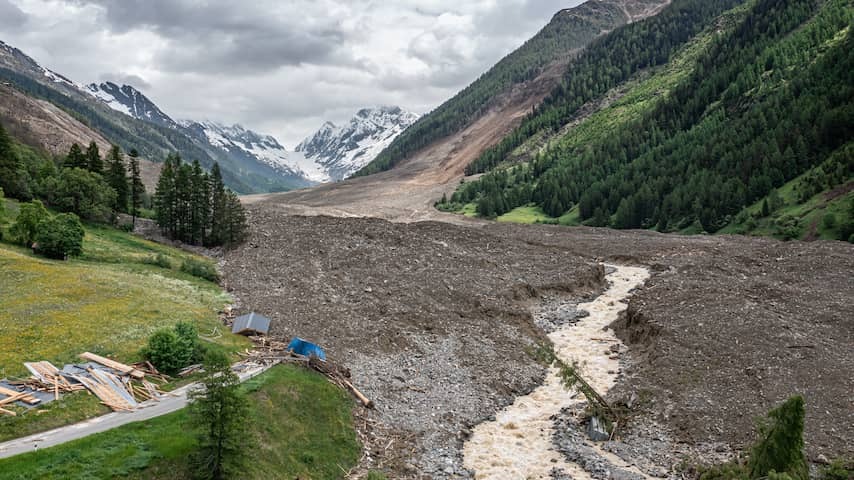
The reconstruction of Blatten is under discussion. The Swiss mountain village was buried under an avalanche at the end of last month after a mountain top broke off. More avalanches are expected due to climate change. Therefore, scientists are asking the question: should mountain villages be habitable?
On May 20, the top of the Birchgletsjer broke off, resulting in an avalanche of stones, ice, and mud. Dozens of houses were destroyed. Due to the avalanche danger, the three hundred residents had already been evacuated. One person is still missing.
Although the acute danger seemed to be over at the end of May, Swiss mountain villages may face more avalanches in the future. Due to climate change and global warming, glaciers and permafrost are melting, which continues to increase the chance of breaking rocks and avalanches. Rivers can also flood as a result.
Although the residents and authorities of Blatten want to rebuild the mountain village, there is also resistance, writes the Swiss medium Der Bund. In addition to high costs and a significant outflow of young people from the mountain villages, the viability of mountain villages is also an argument.
“In the coming years and decades, we will see more and more Alpine villages disappear,” writes Swiss meteorologist Jörg Kachelmann on X. Experts tell Der Bund that reconstruction of affected villages can be dangerous due to the increased risk of debris coming down from the mountains. They also state that “the most vulnerable places” in the mountains should be evacuated in the long term.
First clear debris, then assess damage
In recent years, Switzerland has had to deal with avalanches more often. For example, in 2017 eight hikers were buried and last year a mountainside collapsed, killing seven people.
The authorities have not yet made a decision about the reconstruction of Blatten. First, the debris is removed with trucks, and then the precise damage is assessed. Der Bund writes that the village is of “cultural and historical value” to the Swiss.